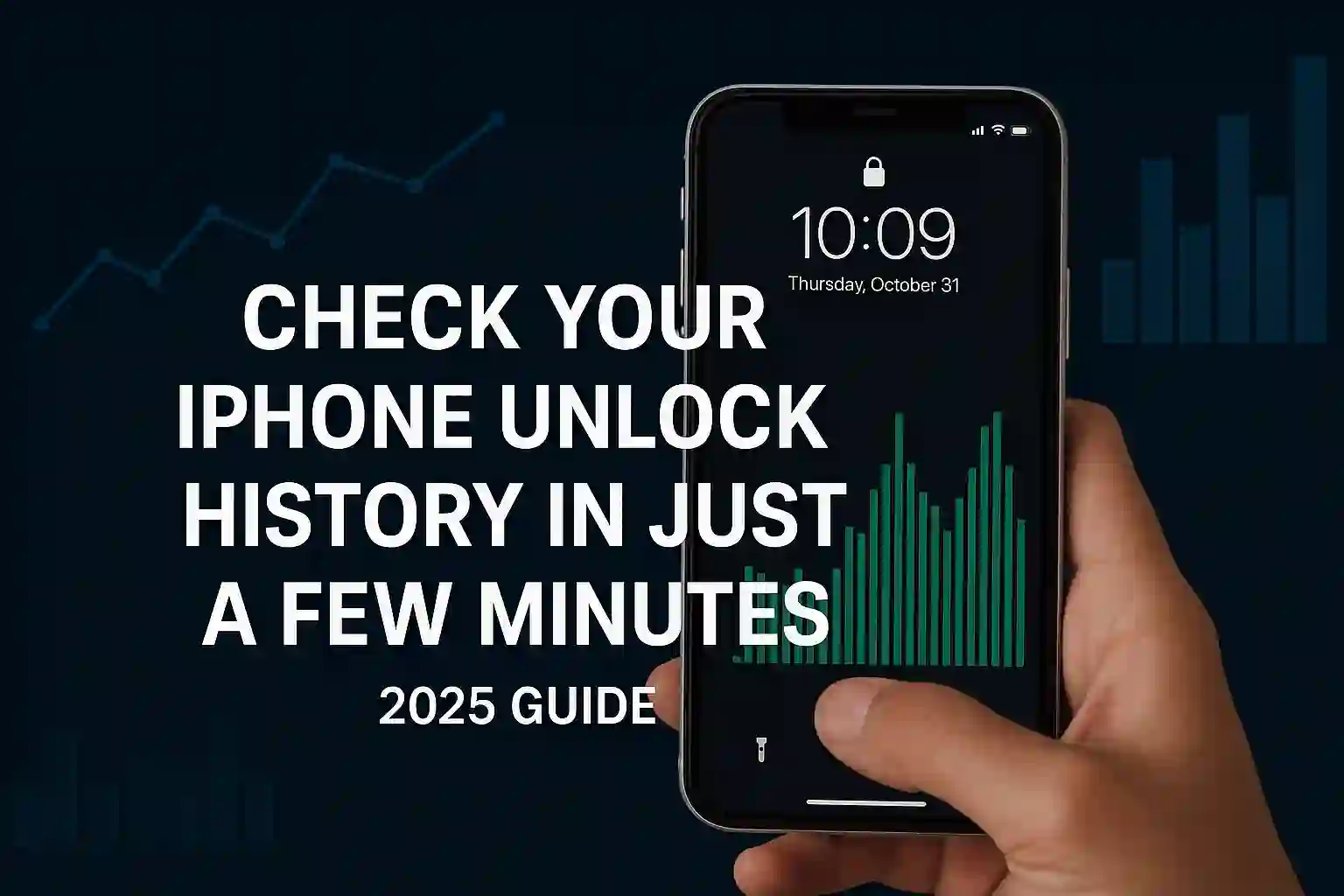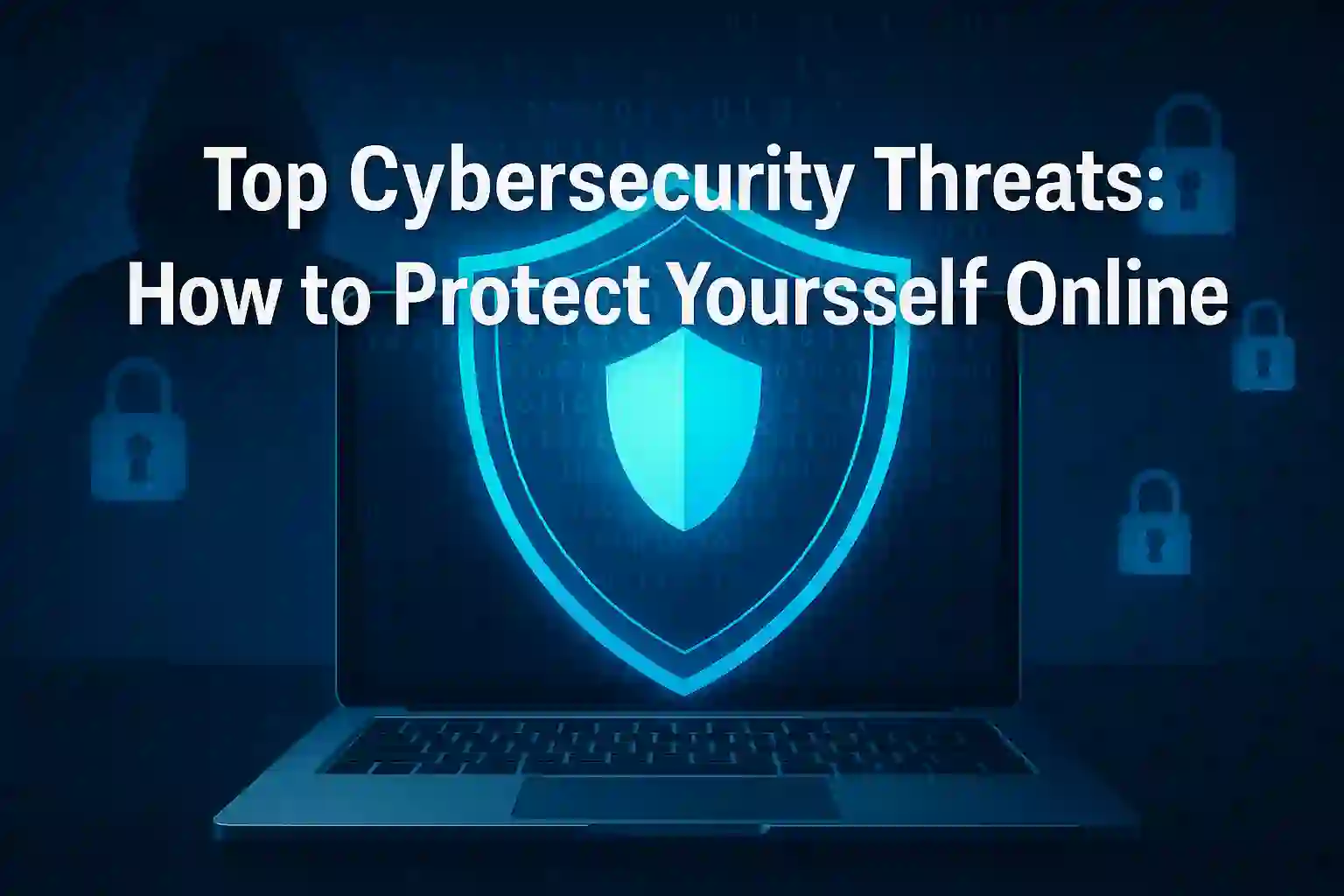How I Keep My Personal Data Safe: Simple Best Tips

Table of Contents
ToggleThe average person now spends over 7 hours daily connected to apps, websites, and services – enough time to fly from New York to Paris. Yet few realize this constant activity leaves behind sensitive details like health records, banking credentials, and even Social Security numbers.
Cyberattacks surged by 15% last year alone, with hackers exploiting everything from weak passwords to unsecured Wi-Fi networks. This isn’t just about leaked credit cards. Breaches now expose genetic test results, private messages, and location histories – data that can’t be replaced like a compromised card.
Guarding sensitive information requires more than antivirus software. It demands strategic habits tailored to today’s risks. Many assume only corporations face serious threats, but individuals accounted for 65% of 2023’s identity theft cases according to FTC reports.
The stakes keep rising as our lives grow more interconnected. Unlike a physical wallet, digital vulnerabilities often go unnoticed until damage occurs. This guide outlines practical methods to secure accounts, devices, and online behavior without technical expertise.
Key Takeaways
- Global internet usage now exceeds 7 daily hours per person, amplifying privacy risks
- Data breaches increased 15% year-over-year, targeting financial and medical records
- Proactive security measures reduce identity theft risks by up to 85%
- Effective protection combines technology updates with behavioral adjustments
- Regular privacy audits help maintain control over sensitive information
READ ALSO – How to Recover Deleted Text Messages on Android/iPhone
Understanding the Importance of Data Protection
Daily routines now involve countless digital transactions. Banking apps handle paychecks, streaming services track viewing habits, and social platforms document life events. Each interaction creates permanent records that form a detailed profile of our lives.
Digital Footprint Expansion
Modern connectivity means sensitive details like Social Security numbers, medical histories, and credit card data circulate across networks. Health portals store lab results, while e-commerce sites retain purchase patterns. Even fitness trackers log biometric details vulnerable to exploitation.
Social media platforms amplify exposure. Targeted ads rely on hidden algorithms harvesting location data, political views, and relationship statuses. Many users unknowingly consent to terms allowing third-party data sharing.
Evolving Cyber Risks
Hackers now deploy AI-driven phishing schemes and ransomware attacks. Breaches create lasting consequences beyond financial loss. Victims report anxiety and distrust after identity theft compromises medical records or employment opportunities.
Data Privacy Week (January 24-28) underscores global efforts to address these challenges. Originating from Europe’s 2008 Convention 108, this initiative highlights proactive security habits over reactive fixes. Regular privacy audits and encryption tools form essential defenses against evolving threats.
How I Keep My Personal Data Safe: Simple Best Tips
Effective security demands combining digital tools with mindful habits. A layered approach addresses vulnerabilities across devices, accounts, and online activities. Single solutions like basic passwords no longer suffice against sophisticated attacks.
Start by securing accounts with multi-factor authentication and unique credentials. Password managers streamline this process while eliminating risky reuse patterns. Encryption tools add another barrier, scrambling sensitive details during transmission.
Human behavior remains critical. Verify sender addresses before clicking links, and avoid oversharing on public platforms. Cybersecurity experts recommend quarterly reviews of app permissions and privacy settings to limit unnecessary data exposure.
Proactive measures reduce risks significantly. Automated updates patch vulnerabilities, while firewalls monitor network traffic. Regular backups ensure quick recovery if breaches occur, whether using cloud services or external drives.
Adopting these strategies creates interconnected safeguards. “Threats evolve, but consistent habits form the foundation of real protection,” notes a 2023 industry report. Prioritize methods that work seamlessly across devices and daily routines.
Implement a VPN for Data Encryption
Every click online leaves traces that could expose sensitive details without proper safeguards. Virtual private networks (VPNs) create a secure internet tunnel using technology refined since 2005. This layer of protection becomes critical when accessing public Wi-Fi or handling financial transactions.
How VPN Works
VPN services use military-grade encryption protocols like OpenVPN and IPSec/IKEv2. These tools scramble information into unreadable code during transmission. Even if hackers intercept the data, they can’t decode it without the encryption key.
The process assigns a temporary IP address, hiding your geographic location and device details. Reputable providers operate servers in 50+ countries, letting you choose virtual locations. This flexibility helps bypass regional content restrictions while maintaining anonymity.
Benefits of Masking Your IP
Concealing your IP address prevents websites from tracking browsing habits. It also blocks advertisers from building targeted profiles based on network activity. For travelers, VPNs provide secure access to home country services like banking platforms.
“A VPN acts as both shield and disguise – essential tools in today’s surveillance-heavy digital landscape.”
Cybersecurity Analyst, 2023 Threat Report
| Protocol | Security Level | Speed | Compatibility |
|---|---|---|---|
| OpenVPN | High | Fast | All devices |
| IPSec/IKEv2 | High | Very Fast | Mobile-focused |
| L2TP/IPSec | Moderate | Medium | Legacy systems |
When selecting providers, prioritize services with strict no-log policies and 24/7 support. Regular connection tests ensure consistent protection across all networks. Most premium VPNs offer troubleshooting guides for common issues like dropped signals or slow speeds.
READ ALSO – 5G Draining Battery? Learn Why & How to Fix It Fast.
Avoid Saving Passwords in Your Browser
Modern browsers often beg to remember your credentials with tempting “Save Password?” prompts. While convenient, this feature creates a single point of failure for account security. A 2023 SpyCloud report revealed 64% of users store sensitive logins in browsers – a goldmine for hackers accessing lost or shared devices.
Risks of Browser Storage
Browser-stored passwords remain vulnerable through:
- Physical device theft granting instant access to all saved accounts
- Malware extracting credentials from poorly encrypted databases
- Shared workstations exposing private logins to colleagues or visitors
Unlike dedicated tools, browsers lack master password requirements. Anyone opening Chrome or Safari can view saved credentials in plain text through settings. This risk multiplies when syncing across devices, potentially compromising smartphones and tablets simultaneously.
Disable auto-save features in three steps:
- Chrome: Settings → Autofill → Passwords → Toggle off “Offer to save passwords”
- Firefox: Preferences → Privacy & Security → Uncheck “Ask to save logins”
- Safari: Settings → Passwords → Uncheck “AutoFill user names and passwords”
For seamless yet secure access, switch to encrypted password managers like Dashlane or 1Password. These tools:
- Require a master password/biometric verification
- Generate uncrackable 16-character codes
- Sync across devices without cloud vulnerabilities
“Browser password managers are like leaving house keys under the doormat – convenient but catastrophically insecure.”
Lead Engineer, 2024 Cybersecurity Trends Report
Top-tier managers alert users about breached credentials and duplicate passwords. They integrate directly with browsers, maintaining convenience while adding military-grade security layers. Transitioning takes minutes but provides lifelong protection against credential-based attacks.
Avoid Public Wi-Fi and Unsecure Networks
Free airport and café internet often feels like digital manna – until you realize what’s at stake. These networks operate without encryption, turning every login and search into open broadcasts. Hackers exploit this vulnerability through rogue hotspots named “Free Airport WiFi” or “Guest Network,” tricking users into connecting to malicious portals.
Potential Risks of Public Wi-Fi
Cybercriminals use packet sniffers to intercept unencrypted traffic flowing through public networks. A 2023 cybersecurity study found 78% of hotel Wi-Fi systems showed signs of previous malware injection attempts. Common attacks include:
- Session hijacking to access active social media or email accounts
- Credential harvesting through fake login pages
- Malicious file drops disguised as software updates
One notorious technique involves evil twin attacks, where hackers clone legitimate network names. Unsuspecting users connect to these clones, allowing full visibility into their online activity. “Public Wi-Fi is like shouting your bank PIN in a crowded room – everyone hears it,” explains a NortonLifeLock security specialist.
Even after disconnecting, risks persist. Some malware variants remain dormant, recording keystrokes or activating cameras months later. Always prioritize cellular data or personal hotspots for sensitive transactions. When unavoidable, use VPNs with AES-256 encryption to create secure tunnels through untrusted networks.

READ ALSO – How to Stop Apps from Tracking You – Android & iOS Tips
Regularly Update Your Software and Applications
Outdated programs create invisible doors for cyber intruders. A 2024 SANS Institute report found 60% of successful breaches exploited vulnerabilities patched in updates released months prior. Modern software updates serve dual purposes – enhancing features while sealing security gaps.
Security Patches: Your Digital Reinforcements
Microsoft’s March 2024 update fixed a critical flaw letting attackers remotely access Windows devices without authentication. These patches address weaknesses hackers actively target. Delaying updates leaves phones, tablets, and smart home systems exposed to credential theft or ransomware.
Browser extensions and media players often harbor overlooked risks. Adobe’s 2023 emergency update patched a PDF reader vulnerability affecting 87 million users. Prioritize updates for:
| Platform | Auto-Update Location | Manual Check Steps | Backup Tip |
|---|---|---|---|
| Windows | Settings → Windows Update | Check daily for critical patches | Create restore point first |
| macOS | System Preferences → Software Update | Weekly verification recommended | Time Machine backup |
| Android | Settings → System → Advanced | Monthly security updates | Cloud sync essential data |
| iOS | Settings → General → Software Update | Enable automatic downloads | iCloud backup before major OS updates |
Streamlining Protection Through Automation
Configure automatic updates across all devices to eliminate human oversight. Most systems allow scheduling installations during inactive hours. For enterprise software like Salesforce or QuickBooks, enable vendor notification alerts.
“The 72-hour window after patch release is critical – attackers reverse-engineer updates to exploit unpatched systems.”
Microsoft Security Engineer, 2024 Advisory
Concerned about update stability? Major platforms now use phased rollouts and compatibility checks. Maintain current backups to recover quickly if rare issues occur. Combine automated protection with quarterly manual checks for niche apps lacking auto-update features.
Beware of Phishing Emails and Suspicious Links
Cybercriminals launch over 3 billion phishing emails daily, often impersonating trusted organizations to steal sensitive data. These messages frequently mimic bank alerts or account notifications, pushing recipients to act quickly. One wrong click can install malware or redirect to counterfeit login pages.
Identifying Phishing Red Flags
Scammers craft convincing messages using subtle flaws. A common tactic involves email addresses with swapped letters – like “SunTust@service.com” instead of SunTrust. Other warning signs include:
| Feature | Phishing Email | Legitimate Communication |
|---|---|---|
| Sender Address | Mispelled domains (amaz0n.support) | Official company domains |
| Urgency Level | Threatens account closure in 24 hours | Provides reasonable deadlines |
| Links | Redirects to http:// sites | Uses https:// with padlock icons |
| Attachments | Unexpected ZIP files | Clearly labeled documents |
Fraudulent websites often mirror real login pages but lack security features. Entering credentials here grants hackers direct access to financial accounts. Victims often discover unauthorized transactions weeks later.
“Phishing scams now use AI-generated logos and personalized details to bypass spam filters – everyone must verify before clicking.”
2024 Global Cybersecurity Assessment
Always contact organizations through verified channels when unsure about messages. Use official apps or dial customer service numbers from bank cards – not email links. Report suspicious activity to the FTC’s Complaint Assistant to help disrupt criminal operations.
READ ALSO – Easily Record WhatsApp Calls on Android and iPhone (Legally)
Utilize Cybersecurity Tools and Practices
Advanced digital protection extends beyond basic precautions. Comprehensive security suites now offer enterprise-grade safeguards for home users at accessible price points. These tools form a critical barrier against evolving online threats.
Choosing the Right Firewall
A robust firewall acts as your network’s gatekeeper. It monitors incoming/outgoing traffic while blocking unauthorized access attempts. Modern solutions like GlassWire provide user-friendly dashboards showing real-time connection maps across all devices.
Antivirus and Malware Protection
Next-gen antivirus software combines signature-based detection with behavioral analysis. Top performers like Malwarebytes and Norton 360 consistently score above 99% in independent lab tests for malware eradication. Key features include:
- Automatic USB drive scanning before file access
- Ransomware rollback capabilities
- Low system resource usage (under 5% CPU)
| Solution | Real-Time Protection | System Impact | Unique Feature |
|---|---|---|---|
| Avast Free | Basic | Low | Wi-Fi intruder alerts |
| AVG Ultimate | Advanced | Medium | Webcam shield |
| Malwarebytes | Premium | Low | Exploit prevention |
Modern tools automatically update threat databases hourly. Performance optimization modes let you schedule deep scans during inactive periods. “Home users need multi-layered defenses just like corporations – the attack surface is identical,” notes a 2024 AV-Test Institute report.
“Free antivirus solutions now offer 85% of paid features – there’s no excuse for unprotected devices.”
Cybersecurity Today Magazine
Regular configuration checks ensure maximum protection. Enable automatic quarantine for suspicious files and review firewall rules quarterly. Combined with smart browsing habits, these tools create an impenetrable digital fortress around your computer systems.
Back Up Your Data for Recovery

Losing access to critical files during emergencies can disrupt work and personal life. Modern devices allow remote wiping to prevent unauthorized access – but erased information becomes permanently unavailable. Regular backups create safety nets for these scenarios.
Digital Safekeeping Solutions
Cloud storage offers automatic sync across devices with bank-grade encryption. Services like iDrive or Backblaze protect against physical damage and theft. Files remain accessible from any computer through secure portals.
Local backups provide physical control through external drives or NAS systems. These options suit sensitive information requiring air-gapped protection. Many experts recommend a hybrid approach – storing vital data both online and offline.
Choose backup frequency based on file importance. Financial records might update hourly, while personal photos could sync weekly. Test restoration processes quarterly to ensure data integrity. This way, you maintain access regardless of device status or location.
FAQ
Why is data protection critical in today’s digital age?
With rising cyber threats like phishing scams and malware attacks, protecting personal information prevents identity theft, financial fraud, and unauthorized access to sensitive data like credit card numbers or bank accounts.
How does a VPN enhance online privacy?
A VPN encrypts internet traffic and masks your IP address, making it harder for third parties to track your activity or location. Services like NordVPN or ExpressVPN also secure connections on public Wi-Fi networks.
Is saving passwords in browsers safe?
Browser storage lacks advanced security features, leaving accounts vulnerable if devices are compromised. Use a dedicated password manager like LastPass or 1Password for encrypted, multi-factor-protected credential storage.
What risks do public Wi-Fi networks pose?
Unsecured networks expose devices to man-in-the-middle attacks, where hackers intercept login details, credit card information, or install malware. Always use a VPN or avoid accessing sensitive accounts on public connections.
Why are software updates essential for security?
Updates patch vulnerabilities that cybercriminals exploit. Enable automatic updates for operating systems, apps, and antivirus software like Norton or McAfee to stay protected against emerging threats.
How can I identify phishing emails?
Look for red flags like generic greetings, urgent requests for personal data, mismatched sender addresses, or suspicious links. Verify unexpected messages directly with the company via official channels.
What cybersecurity tools are most effective?
Combine a firewall (like Windows Defender), antivirus software, and anti-malware tools. For added protection, use encrypted messaging apps like Signal and enable two-factor authentication on accounts.
Should I use cloud or local backups for data recovery?
Cloud storage (e.g., Google Drive, iCloud) offers remote access and redundancy, while local backups on external drives provide offline security. Use both for comprehensive protection against ransomware or hardware failures.






